Double Flanged vs Lug Type Butterfly Valves: Key Differences
In industrial pipeline systems, butterfly valves are widely used because of their simple design, quick operation, and cost-effectiveness. However, when it comes to choosing between a Lug Type Butterfly Valve and a Flanged Butterfly Valve, the decision can be challenging depending on the specific requirements of your application. As a leading manufacturer in the butterfly valve industry, Union Valve breaks down the key differences between these two types of valves to help you make the right choice.
What is a Double Flanged Butterfly Valve?
A double flanged butterfly valve has flanges on both ends, which are used to connect the valve to the pipeline system. The valve consists of a body, a disc, a stem, and a sealing ring. The disc rotates to control or shut off the flow of fluid.
What is a Lug Type Butterfly Valve?
A lug type butterfly valve is designed with lugs (threaded holes) on both sides of the valve body. These lugs allow the valve to be bolted directly to the pipeline flanges. This design makes installation easier, especially in tight spaces or when quick installation is needed.

Installation Design Comparison
Lug Type Butterfly Valve: Easy to Install and Remove
The valve body has lugs on both sides, which are bolted directly to the pipeline flanges. The valve itself does not have flanges, making it easier to install and remove.
Advantages:
Easy to disassemble; one side can be removed without affecting the other side, making it ideal for applications that require frequent maintenance.
Lighter than flanged butterfly valves, saving space during installation.
Double Flanged Butterfly Valve: Integrated Installation
The valve comes with flanges that are bolted directly to the pipeline flanges. This design ensures a secure connection but requires precise alignment between the valve and pipeline flanges during installation.
Advantages:
Integrated design reduces the risk of leaks, making it suitable for long-distance pipelines.
Better sealing performance, as the flange surface fits the pipe completely, making it ideal for high-pressure, high-temperature, or corrosive environments.

Sealing Performance Comparison
Sealing performance is a critical factor when choosing a valve. Here’s how the two types compare:
|
|
Lug Type Butterfly Valve |
Double Flanged Butterfly Valve |
|
Sealing Structure |
Typically uses soft seals (e.g., EPDM, PTFE, NBR rubber) or multi-layer seals (metal + elastomer) |
Can use either soft seals or metal hard seals (e.g., stainless steel + graphite) |
|
Sealing Surface Contact |
The disc and seat have elastic contact, relying on medium pressure to assist sealing |
The flange surface and pipeline have rigid contact, providing more uniform and stable sealing |
|
Applicable Media |
Water, air, weakly corrosive liquids (e.g., acid-base solutions) |
Water, steam, oil, highly corrosive media (e.g., acids, alkalis, gases) |
Pressure Rating Comparison
Pressure rating is another important factor to consider. Here’s a comparison:
|
|
Lug Type Butterfly Valve |
Double Flanged Butterfly Valve |
|
Design Pressure Range |
Typically PN10~PN16 (medium-low pressure) |
Can handle PN16~PN40 or even higher (high pressure) |
|
Valve Body Strength |
Relies on bolt connections, limited pressure resistance |
Flange surface rigid connection, stronger pressure resistance |
|
Applicable Scenarios |
Water treatment, HVAC, low-pressure gas transportation |
Petrochemical, power energy, long-distance pipelines |
Maintenance Comparison
Lug Type Butterfly Valve:
Easy to install and remove. One side can be disassembled without affecting the other side.
If the valve is damaged, it can be quickly replaced, reducing downtime.
Ideal for applications that require frequent maintenance or replacement.
Double Flanged Butterfly Valve:
Requires more time to disassemble due to the number of bolts involved.
Typically used in applications where frequent maintenance is not required.
Cost Comparison
Lug Type Butterfly Valve:
Simpler design, lower manufacturing costs, especially for small-diameter, medium-low pressure applications.
Cost-effective for projects with limited budgets.
Double Flanged Butterfly Valve:
Higher material and manufacturing costs due to the use of flanges.
More cost-effective in high-pressure, large-diameter applications where long-term reliability is critical.
Selection Guide
✅Choose Lug Type Butterfly Valve if:
You’re working with medium-low pressure water or air systems.
You need a valve that’s easy to install and maintain.
You have a limited budget or are working with diverse pipeline materials.
✅Choose Double Flanged Butterfly Valve if:
You’re dealing with high-pressure, high-temperature, or corrosive media.
You need a valve for long-distance pipelines or vibrating environments.
You prioritize long-term stability and durability.
Other Frequently Asked Questions
Q: What’s the difference between a Wafer Type Butterfly Valve and a Flanged Butterfly Valve?
A: The main difference lies in the connection method. A wafer type butterfly valve is clamped between two pipeline flanges, making it compact and easy to install. It’s suitable for low-pressure, small-diameter pipelines and is commonly used for water, air, and oil.
On the other hand, a flanged butterfly valve has flanges that are bolted to the pipeline flanges, offering better sealing and higher pressure resistance. It’s ideal for medium-high pressure, large-diameter pipelines and is commonly used for steam, natural gas, and chemical applications. Wafer valves are cheaper and easier to maintain, but flanged valves offer better sealing and durability.
As a leader in the butterfly valve industry,Union Valve offers a wide range of solutions, including lug type,flanged type, wafer type,double eccentric, and triple eccentric designs. Our products are certified byISO9001:2008,CE, WRAS, ACS (France), EAC (Russia), TUV, and SGS, ensuring high-quality performance for our customers.
If you have any further questions, please contact us.
Related Article:
- Essential Butterfly Valve Knowledge: Do You Know All of These?
- Step-by-Step Guide to Perfect Butterfly Valve Installation
- Unlocking Valve Efficiency: Concentric, Double, and Triple Eccentric Butterfly Valves Explained
- Understanding Your Options: Soft Sealing vs Hard Sealing Butterfly
- Understanding Butterfly Valve Seats: The Differences Between Hard, Soft and Rubber Lined


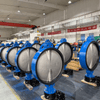
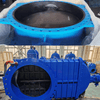
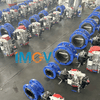
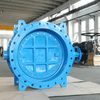
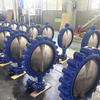
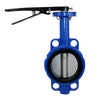
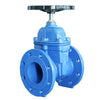
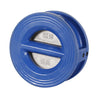
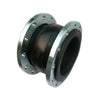
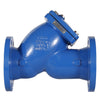
Are double flange butterfly valves suitable for mating to flat face CPVC flanges without spacer rings?